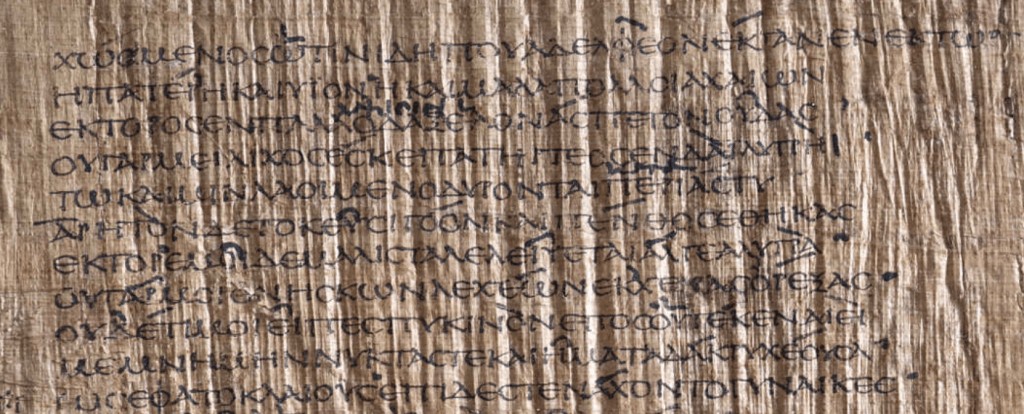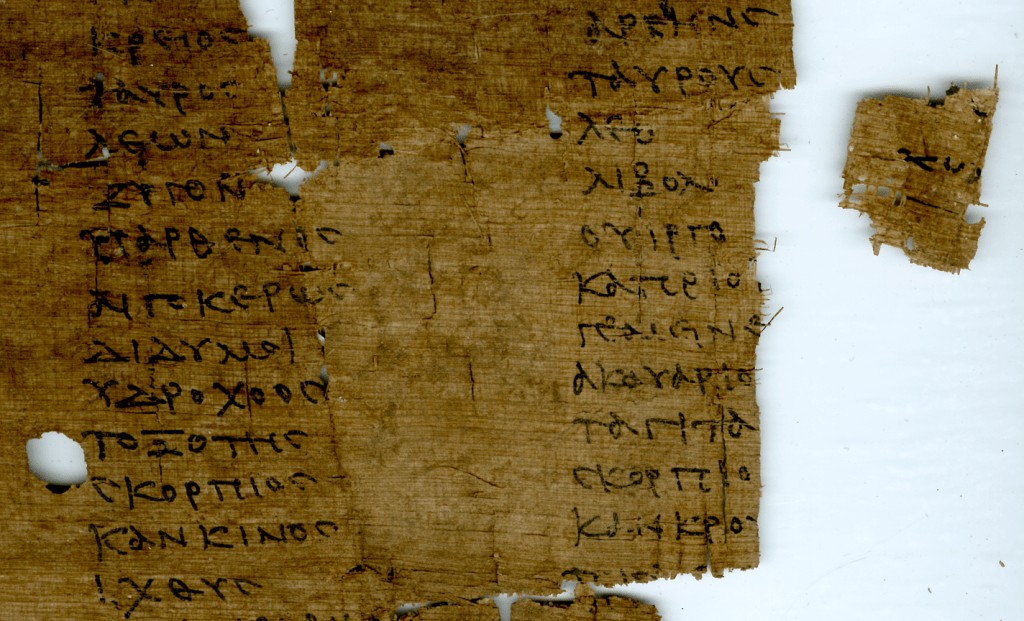How Did Ancient People Learn Languages? Exploring the methods employed by ancient civilizations reveals fascinating insights into language acquisition. LEARNS.EDU.VN provides a comprehensive overview of ancient language learning techniques, connecting historical practices with modern educational strategies, offering practical solutions for language enthusiasts and educators alike. Delve into the historical context, practical applications, and invaluable benefits of learning languages the ancient way.
1. Understanding Ancient Multilingualism
The ancient world, though often perceived as monolingual, was surprisingly diverse linguistically. While Greek and Latin held prominent positions, many other languages thrived, including Oscan, Etruscan, Gaulish, Aramaic, and Egyptian. Individuals frequently navigated multiple languages for trade, diplomacy, and cultural exchange. This multilingual environment necessitated effective language learning methods. Consider the following statistics highlighting linguistic diversity in the Roman Empire:
| Region | Dominant Language(s) | Other Languages Spoken |
|---|---|---|
| Roman Italy | Latin | Oscan, Etruscan |
| Gaul | Gaulish | Latin |
| Eastern Empire | Greek | Aramaic, Egyptian |
| North Africa | Latin | Punic, Berber |



1.1 The Practical Need for Language Acquisition
In ancient societies, learning a new language was often driven by practical necessities. For example, Greek speakers in Roman territories learned Latin to engage with the ruling class and access administrative roles. Similarly, Roman intellectuals valued Greek for its rich literary and philosophical traditions. This blend of practical and cultural motivations fueled language learning initiatives.
1.2 Challenges of Ancient Language Learning
Ancient language learners faced significant obstacles compared to their modern counterparts. Resources like apps, computers, recordings, and printed books were unavailable. Even basic tools like dictionaries were scarce. This scarcity made the learning process more challenging but also fostered resourcefulness and innovative teaching methods. LEARNS.EDU.VN delves into how these challenges were overcome through ingenious strategies.
2. Core Techniques of Ancient Language Learning
Ancient language education heavily relied on techniques that emphasized memorization, contextual learning, and practical application. These methods, refined over centuries, offer valuable lessons for modern language learners.
2.1 Bilingual Texts and Contextual Learning
One prevalent method involved using bilingual texts, presenting passages in both the target language and the learner’s native language. These texts were structured in parallel columns, providing a direct translation for each line. This approach facilitated understanding of vocabulary and grammar within a natural context, allowing learners to gradually internalize the language structure.
For example, the Colloquium Harleianum, a well-known ancient text, presented Greek and Latin versions side by side. Here’s a simplified version:
| English | Latin |
|---|---|
| You insult me, | Loquoris me, |
| Bad head? | Mala caput? |
| May you be crucified. | Cruciaberis. |
This format allowed students to understand the meaning of individual words and phrases while also grasping the overall context.
2.2 Memorization and Recitation
Memorization played a crucial role in ancient language learning. Students were expected to memorize dialogues, stories, and vocabulary lists. Recitation was a common practice, reinforcing memory and improving pronunciation. This method honed not just comprehension but also active language use.
2.3 Grammatical Foundations
Despite the emphasis on contextual learning, grammar was not neglected. Ancient learners systematically studied grammatical paradigms and rules. However, the approach was often implicit, with grammar learned through exposure to texts rather than explicit instruction.
3. Vocabulary Building: A Thematic Approach
Vocabulary acquisition was a fundamental aspect of ancient language learning. Thematic lists were frequently used, grouping words by topic to facilitate memorization and association.
3.1 Thematic Word Lists
Thematic word lists covered various categories, such as gods and goddesses, celestial bodies, parts of the body, and foods. These lists provided a structured way to expand vocabulary, enabling learners to discuss a wide range of subjects. An example of a thematic word list might look like this:
| Topic | Word (Latin) | Translation (English) |
|---|---|---|
| Gods | Deus | God |
| Goddesses | Dea | Goddess |
| Celestial | Stella | Star |
| Body Parts | Caput | Head |
| Food | Panis | Bread |
3.2 Greek Transliteration
Greek speakers learning Latin sometimes used word lists in Greek transliteration. This method allowed learners to focus on pronunciation and vocabulary without immediately grappling with a new alphabet. This approach highlights the adaptability of ancient language learning techniques.
4. Reading Monolingual Texts
Once learners acquired a sufficient vocabulary and grasp of grammar, they progressed to reading monolingual texts. This step was crucial for developing fluency and deepening comprehension.
4.1 Popular Texts for Language Learners
For Latin learners, texts by Cicero, Sallust, and Terence were common choices. Greek learners often read Homer and other classical authors. These texts exposed learners to sophisticated language use and cultural nuances.
4.2 Glossaries and Commentaries
To aid comprehension, learners utilized glossaries that provided definitions for difficult words. Commentaries offered additional explanations and interpretations of the text. These resources supported independent learning and critical analysis.
4.3 Annotating Texts
Students often annotated their texts with translations, punctuation marks, and vowel lengths. This active engagement with the material facilitated deeper understanding and retention. Annotating texts was a common practice, indicating a commitment to thorough learning.
5. Writing in the Target Language
Developing writing skills was an essential component of ancient language learning. While spoken proficiency was highly valued, writing allowed for more formal and structured communication.
5.1 Composition Skills
Latin speakers often aimed for high proficiency in Greek composition. While surviving examples are scarce, historical accounts suggest that some achieved impressive levels of skill.
5.2 Translation Exercises
Greek speakers learning Latin often practiced translating Greek texts into Latin. Fables were a popular choice for translation exercises, providing simple yet engaging content for practice.
6. The Role of Conversation
The extent of conversation practice in ancient language learning is debated. While formal classroom settings may not have emphasized active conversation, anecdotal evidence suggests that many learners aimed for and achieved spoken proficiency.
6.1 Classroom Interactions
Some scholars believe that language classes were conducted in the target language, naturally providing opportunities for conversation. Question-and-answer sessions with the teacher would have encouraged active participation and oral practice.
6.2 Extracurricular Activities
Conversation may have also occurred outside the classroom, as learners interacted with native speakers or participated in social activities. The goal of spoken fluency likely motivated learners to seek out opportunities for conversation.
7. Imperfections and Inconsistencies
Ancient language education was not without its flaws. Teachers sometimes lacked proficiency, and learning materials often contained errors. Despite these imperfections, many learners achieved remarkable fluency.
7.1 Variable Quality of Instruction
The quality of language instruction varied significantly depending on the teacher’s expertise and resources. Some teachers may have had limited knowledge of the target language, leading to inaccuracies in instruction.
7.2 Errors in Learning Materials
Ancient learning materials were often copied by hand, leading to the introduction of errors. These errors could confuse learners and hinder their progress. However, dedicated students often found ways to correct these errors and continue their learning journey.
7.3 Resilience and Success
Despite these challenges, the evidence suggests that many ancient learners achieved a high level of proficiency in their second languages. This success underscores the effectiveness of the core learning techniques and the dedication of the learners.
8. Modern Relevance of Ancient Language Learning Techniques
Many of the techniques used in ancient language learning remain relevant today. The emphasis on contextual learning, memorization, and active engagement can enhance modern language education.
8.1 Contextual Learning Today
Modern language courses can benefit from incorporating bilingual texts and contextual exercises. Presenting vocabulary and grammar within meaningful contexts makes learning more engaging and effective.
8.2 Integrating Memorization
While rote memorization is sometimes viewed negatively, strategically incorporating memorization techniques can improve vocabulary retention and grammatical accuracy. Flashcards and spaced repetition are modern tools that support memorization.
8.3 Active Engagement
Encouraging active engagement with the material, such as annotating texts and participating in discussions, can enhance understanding and motivation. Active learning strategies promote deeper processing and retention.
9. Case Studies: Famous Ancient Multilinguals
Examining the lives of famous ancient multilinguals provides insights into the practical application and benefits of language learning. These individuals leveraged their language skills for various purposes, from diplomacy to scholarship.
9.1 Cicero
Cicero, a renowned Roman statesman and orator, was fluent in Greek. He used his Greek proficiency to engage with Greek philosophy and literature, enriching his own intellectual pursuits and political discourse.
9.2 Julius Caesar
Julius Caesar also spoke Greek, demonstrating the importance of multilingualism among Roman leaders. His language skills facilitated communication with Greek-speaking regions and allowed him to access a wider range of cultural and political resources.
9.3 Cleopatra
Cleopatra, the last active ruler of the Ptolemaic Kingdom of Egypt, was famous for her multilingual abilities. She spoke several languages, including Egyptian, Greek, and Latin, which enabled her to negotiate effectively with various foreign powers and maintain her political influence.
10. The Future of Language Learning: Lessons from the Past
By studying ancient language learning techniques, modern educators can gain valuable insights into effective teaching methods. Integrating historical approaches with contemporary tools can create a more engaging and successful learning experience.
10.1 Blending Ancient and Modern Methods
Combining traditional memorization techniques with modern technology, such as language learning apps, can optimize learning outcomes. Similarly, incorporating contextual learning exercises with online resources can create a well-rounded curriculum.
10.2 Personalized Learning
Ancient language learning often involved personalized instruction, with teachers tailoring their approach to individual students’ needs. Modern educators can emulate this approach by providing individualized support and customized learning plans.
10.3 Fostering a Love of Language
Ultimately, the goal of language education should be to foster a love of language and culture. By drawing on the rich traditions of ancient language learning, educators can inspire students to embrace the challenges and rewards of mastering a new language.
11. Overcoming Modern Language Learning Challenges with Ancient Wisdom
Modern language learners often face challenges such as lack of motivation, difficulty with grammar, and limited opportunities for practice. Ancient language learning techniques offer potential solutions to these problems.
11.1 Enhancing Motivation
By emphasizing the practical and cultural benefits of language learning, educators can enhance students’ motivation. Highlighting historical examples of successful multilinguals and incorporating culturally relevant content can make learning more engaging.
11.2 Simplifying Grammar
Ancient language learning often involved implicit grammar instruction, with grammar learned through exposure to texts. Modern courses can adopt a similar approach, focusing on contextual learning and gradual grammar acquisition.
11.3 Creating Practice Opportunities
Creating opportunities for active practice, such as conversation groups and language exchange programs, can improve fluency and confidence. Modern technology, such as online language platforms, can facilitate these practice opportunities.
12. Practical Exercises Inspired by Ancient Methods
To apply ancient language learning techniques in a modern context, consider the following practical exercises. These activities can be adapted for various languages and skill levels.
12.1 Bilingual Text Analysis
Select a short passage in the target language and provide a parallel translation in your native language. Analyze the text, paying attention to vocabulary, grammar, and cultural nuances.
12.2 Thematic Vocabulary Lists
Create thematic vocabulary lists based on topics of interest, such as travel, food, or hobbies. Memorize the words and phrases and use them in conversation or writing.
12.3 Annotation Practice
Read a text in the target language and annotate it with translations, grammatical notes, and cultural references. This exercise promotes active engagement and deeper understanding.
13. Success Stories: Modern Learners Using Ancient Techniques
Several modern language learners have successfully incorporated ancient techniques into their study routines. These success stories demonstrate the continued relevance and effectiveness of these methods.
13.1 Case Study 1: Learning Latin with Bilingual Texts
A student learning Latin used bilingual texts to analyze classical literature. By comparing the Latin text with English translations, the student improved their vocabulary and comprehension.
13.2 Case Study 2: Mastering Greek with Thematic Lists
A learner studying Greek created thematic vocabulary lists to expand their knowledge of everyday topics. This approach made learning more manageable and enjoyable.
13.3 Case Study 3: Improving Fluency with Annotations
A language enthusiast improved their fluency by annotating texts with translations and grammatical notes. This active engagement with the material led to a deeper understanding and greater confidence.
14. Resources for Ancient Language Learning Techniques
Numerous resources are available for those interested in exploring ancient language learning techniques. These resources include books, articles, and online platforms.
14.1 Recommended Reading
- Learning Latin the Ancient Way by Eleanor Dickey
- Lingua Latina Per Se Illustrata by Hans Ørberg
- A Primer of Ecclesiastical Latin by John F. Collins
14.2 Online Platforms
- LEARNS.EDU.VN offers a variety of articles and courses on language learning techniques.
- Duolingo provides interactive language lessons with a focus on vocabulary and grammar.
- Memrise offers spaced repetition flashcards to improve vocabulary retention.
14.3 Academic Articles
- “Teaching Latin to Greek speakers in antiquity” by Eleanor Dickey
- “Greek teaching in Republican Rome: how exactly did they do it?” by Eleanor Dickey
15. FAQs About Ancient Language Learning
1. What languages did ancient people typically learn?
Ancient people learned languages such as Latin, Greek, Aramaic, and Egyptian, depending on their geographical location and social needs.
2. How did ancient people learn vocabulary?
They used thematic word lists and bilingual texts to memorize vocabulary in context.
3. Was grammar important in ancient language learning?
Yes, grammar was taught, often implicitly through exposure to texts and explicit rules.
4. What role did memorization play in ancient language learning?
Memorization was crucial for vocabulary, grammar, and texts.
5. Did ancient learners use dictionaries?
Yes, glossaries and commentaries were used to understand difficult words and passages.
6. How did ancient people practice writing in a new language?
Translation exercises and composition were common methods for improving writing skills.
7. Was conversation practice common in ancient language learning?
The extent of conversation practice is debated, but many learners aimed for spoken proficiency.
8. What challenges did ancient language learners face?
Challenges included limited resources, errors in learning materials, and variable instruction quality.
9. Can ancient language learning techniques be used today?
Yes, many techniques are still relevant and effective for modern language learners.
10. What resources are available for learning ancient language learning techniques?
Books, articles, online platforms, and language courses offer insights and practical exercises.
16. Embracing the Timeless Wisdom of Ancient Language Learning
The journey of ancient language learners offers valuable lessons for modern education. By integrating historical techniques with contemporary tools, educators can create more engaging, effective, and personalized learning experiences.
At LEARNS.EDU.VN, we provide resources and courses that incorporate these timeless methods, helping you unlock your language learning potential. Whether you’re a student, educator, or language enthusiast, our platform offers the tools and knowledge you need to succeed.
Explore the world of ancient language learning and discover new ways to master a new language. Join us at LEARNS.EDU.VN and embark on a journey of discovery and growth.
Ready to unlock your language learning potential? Visit LEARNS.EDU.VN today and explore our comprehensive resources and courses. For more information, contact us at 123 Education Way, Learnville, CA 90210, United States. You can also reach us via Whatsapp at +1 555-555-1212. Start your journey with learns.edu.vn and experience the power of education!
